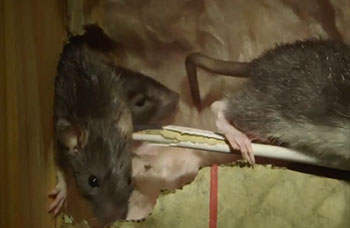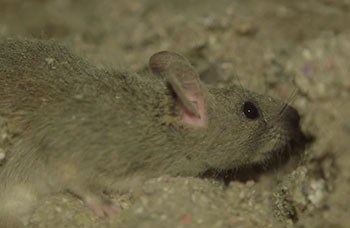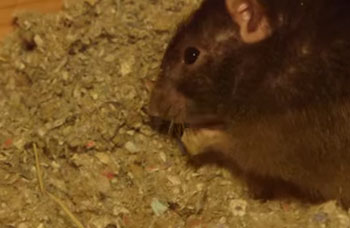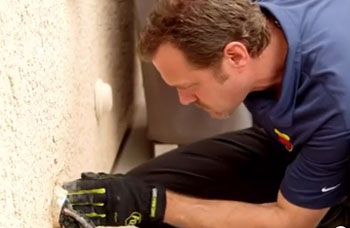Rat Types & Facts
Norway Rat Facts
- 10-12 inches in length and can be either a black, brown or gray color.
- Also known as house rats; can spread diseases through their droppings and urine.
- Seek shelter in homes in cooler weather entering through attics or climbing into homes via tree limbs that are not cut back far enough from the home.
Rat Photos
-
 Pack rat.
Pack rat. -
 Pack rat.
Pack rat. - View More Photos
Norway Rats
One of the most common rats in the United States, Norway rats are extremely adaptive and flourish in a variety of human habitats including in densely populated cities. Outside, they can be found burrowing in the soil beneath buildings and near tree roots. Inside, they live in basements, crawlspaces, attics and sewers.
What Are Norway Rats?
In the United States, Norway rats live throughout the lower 48 states. While generally found at lower elevations, this species can occur wherever people live. The Norway rat is not really from Norway — they are believed to have originated in China.
Norway rats, also called brown or sewer rats, are large, burrowing rodents that are larger than roof rats. They are generally bulky with coarse shaggy brown to grey colored fur with gray to grayish brown underbellies. These types of rats can weigh 7 to 18 ounces and reach lengths of about 16 inches – their tails alone may measure more than 8 inches. The tails are scaly and shorter than the length of the head and body combined. Their ears are small, scaly, and have no fur. Droppings are capsule-shaped.
Norway rats typically nest in underground burrows typically found along building foundations, beneath rubbish or woodpiles, and in moist areas in and around gardens and fields. Nests can be lined with shredded paper, cloth, or other fibrous material. They usually enter buildings in search of food. When searching for food and water, Norway rats usually travel an area of about 100 to 150 feet in diameter; seldom do they travel any further than 300 feet from their burrows or nests. The average female Norway rat has 4 to 6 litters per year and can successfully wean 20 or more offspring annually. When Norway rats invade buildings, they usually remain in the basement or ground floor.
Norway rats are omnivorous and feed on a variety of food sources. They prefer meats, fruits, grains and nuts, and some fruits but will really eat anything. Dead animals also serve as a food source for these rats, and they are capable of catching small fish and rodents. They require water to drink, and they make their colony as close to a water source as possible. They have limited agility, but are excellent swimmers.
Norway Rat Infestation
Norway rats can undermine building foundations and slabs with their burrowing activities and can gnaw on all types of materials, including soft metals such as copper and lead, as well as plastic and wood. They also damage garden crops and ornamental plantings.
Norway rats tend to remain in hiding during the day and are not usually seen exposed unless driven out of their hiding spaces because of limited space or disturbances. Sightings during the day often indicate a potentially large infestation.
Outdoor burrows surrounding the building may be an indication of Norway rat nesting. Other signs of Norway rats are their gnaw marks on food and objects such as utility lines. Rub marks or grease stains caused by rats running along an edge also can indicate activity. Generally, darker stains indicate greater activity. Perhaps one of the best indicators is their droppings. Norway rat droppings are blunt capsule shaped and are about 7 to 7-1/2 inches long. They can be scattered along frequently traveled rodent pathways.
How to Get Rid of Norway Rats
Along with sanitation and rodent-proofing your home, trapping is the safest most effective method of removing indoor rats. Since the Norway rat is less of a climber, traps should be set in hidden areas, close to walls, behind objects, in dark corners, and in places where rat signs, such as droppings, have been seen. Position traps along a wall so that they extend from the wall at right angles, with the trigger end nearly touching the wall. It is important that all traps be placed where they will not be disturbed by children or pets, and that they be protected against accidental contact.
Norway Rat Bites & Treatment
Rats in general are equipped with large teeth and give painful bites when threatened. Healthy rats typically avoid people and prefer to be active when buildings are quiet. However, when feeling threatened, they will bite to defend themselves. Rat bites may be shallow or deep. Some bites display single puncture wounds, while others display multiple abrasions. Bleeding often occurs. The majority of rat-bite patients tend to be children. Rats tend to bite parts of the body that are exposed, like hands and fingers. Rat bites are usually not severe: most bites are simply washed and the patient is immediately released.
Very rarely, a rat may transmit a disease such as rat-bite fever or ratpox through a rat bite. Rats are not a rabies risk in the United States. Although the infection rate is very low, all rodent bites should be promptly and thoroughly cleaned and disinfected. The saliva of some species of rats carries hazardous diseases, such as leptospirosis and Hantavirus. Tetanus immunizations may be required for those who have not received them in recent years. Despite common belief, no rodent bites in North America have ever resulted in the transmission of rabies. However, a person bitten by a rat should seek a medical professional.



